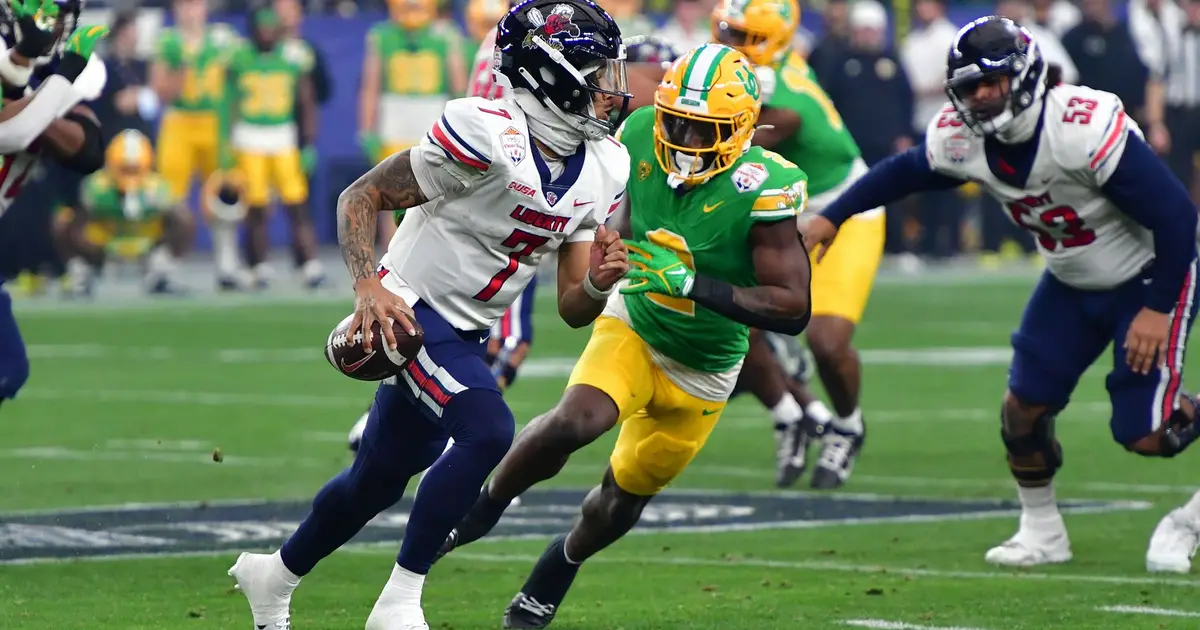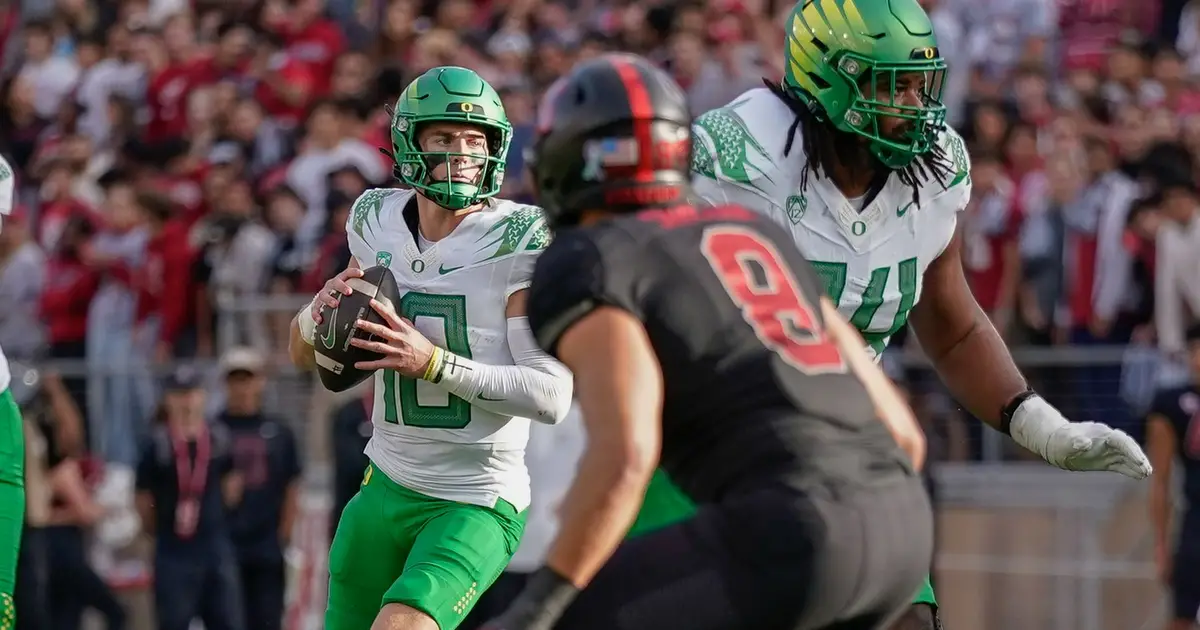The NCAA just approved a rule change that allows helmet communication systems inside of players’ helmets. The technology is not new in the NFL, and it was inevitable that college football would adopt helmet communications. That day has finally arrived, along with additional technology on the sidelines.
Helmet communications will fundamentally change how college football is played and make it more like the NFL. However, putting communication systems into every player’s helmet is unreasonable, and unreasonably expensive. Thankfully, this new rule change will only allow one player per team to have a helmet comm.

All New Year’s Six Teams were given helmet comms to try this year and Nix made the most of it.
(Photo By: Tom Corno)
For offense, the quarterback makes the most sense in coordinating the offense. This won’t change the overall product of college football. Even with both the quarterback and center getting verbal directions from their coaches, it would still those messages to be communicated to the rest of the team. In the case of a huddle-oriented offense, this communication would completely do away with signs coming from the sidelines.
However, for a spread no-huddle offense it would still look and feel mainly the same as it always has, and the only noticeable difference may come in more precise protection coming from the line of scrimmage with the quarterback having a better understanding of how the opposing defense is lining up.
In some ways it feels like the quarterback’s job would be easier, but the reality is that defenses can still disguise their intentions and the quarterback will still have to make adjustments on his own. Furthermore, college football is adopting the same rule as the NFL which cuts the comms with 15 seconds before the play clock expires. A lot can happen in 15 seconds where the defense could stem and move players around and potentially change their look entirely.
The quarterback still has to operate the offense autonomously.
Defensively, the middle linebacker will most likely be the player with helmet comm system, though that will probably vary from team to team. The middle linebacker often works as the quarterback for the defense and communicates the plays to the rest of the team. However, there is also a strong argument for a safety to get the communication system because it can be difficult to tie in the front seven of the defense with the back end.
In both cases it helmet communications may help things operate more cleanly, but it won’t change the nature of communication and player leadership on the field pre-snap.

Jeffrey Bassa pressuring Liberty’s quarterback during the Fiesta Bowl. Bassa would have been one of the defensive players with a helmet comm.
(Photo By: Tom Corno)
Tablets Coming to the Sidelines
The helmet communications are not going to change the game in any fundamental way and won’t hurt the game. However, the addition of tablets onto the sidelines feels like an over-professionalization of the game. The tablets on the sideline are available for players and coaches to analyze broadcast film right after the play.
This technology is already integrated within the NFL and it allows players and coaches to make adjustments during the game. This would be a step too far for the college game, though. For many of the youngest players, this would be overwhelming and might likely have a negative impact on their game. Perhaps the biggest distraction these tablets can cause is frustrating players who see penalties in their real-time film review. Refs are always going to miss penalties and its important to the flow of the game that refs let the players play through some contact. But many players will become fixated on these penalties and it may diminish player performance.
College football is about growth and development of players. This information is a benefit at the professional level because veterans can make use of the information on the sideline on their own. Younger players in college will need coaches to break down what is going on to get the most out of the film.
Some teams will make fantastic use out of these tablets on the sideline, while others will not. Perhaps the most prohibitive reason why this rule change should have been delayed is the unequal cost across schools. The “haves” in college football will adopt all the helmet communications and tablets right away. The less well-off teams may only be able to adopt some of the technology.
These changes in rules seem to fly against the NCAA’s historical approach to rule changes, which have been more gradual over time. This feels like an over-professionalization of the game and though the product on the field will probably not change too drastically to the casual viewer, it is just another step away from what made college football special.
Now it feels more like the junior NFL.
David Marsh
Portland, Oregon
Top Photo By Nancy Paiva

Natalie Liebhaber, the FishDuck.com Volunteer Editor for this article, works in technology in SLC, Utah.

David Marsh is a high school social studies teacher in Portland, Oregon. As a teacher he is known for telling puns to his students who sometimes laugh out of sympathy, and being both eccentric about history and the Ducks.
David graduated from the University of Oregon in 2012 with Majors in: Medieval Studies, Religious Studies, and Geography. David began following Ducks Football after being in a car accident in 2012; finding football something new and exciting to learn about during this difficult time in his life. Now, he cannot see life without Oregon football.

